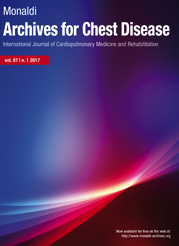Decoding adverse drug reactions in respiratory care: a prospective predictive and severity-based analysis at a tertiary care hospital in India
All claims expressed in this article are solely those of the authors and do not necessarily represent those of their affiliated organizations, or those of the publisher, the editors and the reviewers. Any product that may be evaluated in this article or claim that may be made by its manufacturer is not guaranteed or endorsed by the publisher.
Authors
Adverse drug reactions (ADRs) are a major concern in healthcare, including morbidity, longer hospitalization, and increased healthcare expenses. Despite the necessity of ADR monitoring, reporting is poor, particularly in developing countries such as India. This study assessed the severity, predictability, and causality of ADRs in a tertiary care hospital's respiratory department. A prospective observational study was conducted at KLE’s Dr. Prabhakar Kore Hospital, Belagavi, Karnataka, from September 2023 to January 2025. Patients aged 45 years and above with chronic respiratory conditions were included. ADRs were assessed using validated scales, including the World Health Organization-Uppsala Monitoring Centre Scale, Modified Hartwig and Siegel Scale, and Predictability Assessment. Descriptive statistics were applied to analyze ADR patterns. Among the 107 patients enrolled, 63.5% were elderly and 59.8% were female. Mild ADRs accounted for 60.7% of cases, while serious responses were reported in 3.7%. Predictability analysis revealed that 77.5% of ADRs were foreseeable. Causality assessment revealed ADRs as probable (51.4%), possible (37.3%), and certain (10.2%). Drug withdrawal was the most popular intervention (55.1%). The most commonly reported ADRs were gastrointestinal disorders (33.6%), followed by respiratory (18.6%) and cardiovascular disorders (16.8%). The study highlighted the need for improved pharmacovigilance programs to reduce ADR-related hazards in respiratory patients. Improving ADR reporting methods and predictive assessments can enhance patient safety and maximize therapeutic outcomes.
Ethics approval
The study protocol was approved by the KLE COP Ethics Committee Belagavi (reference number KLECOPBGMEC/D005-2023).How to Cite

This work is licensed under a Creative Commons Attribution-NonCommercial 4.0 International License.






